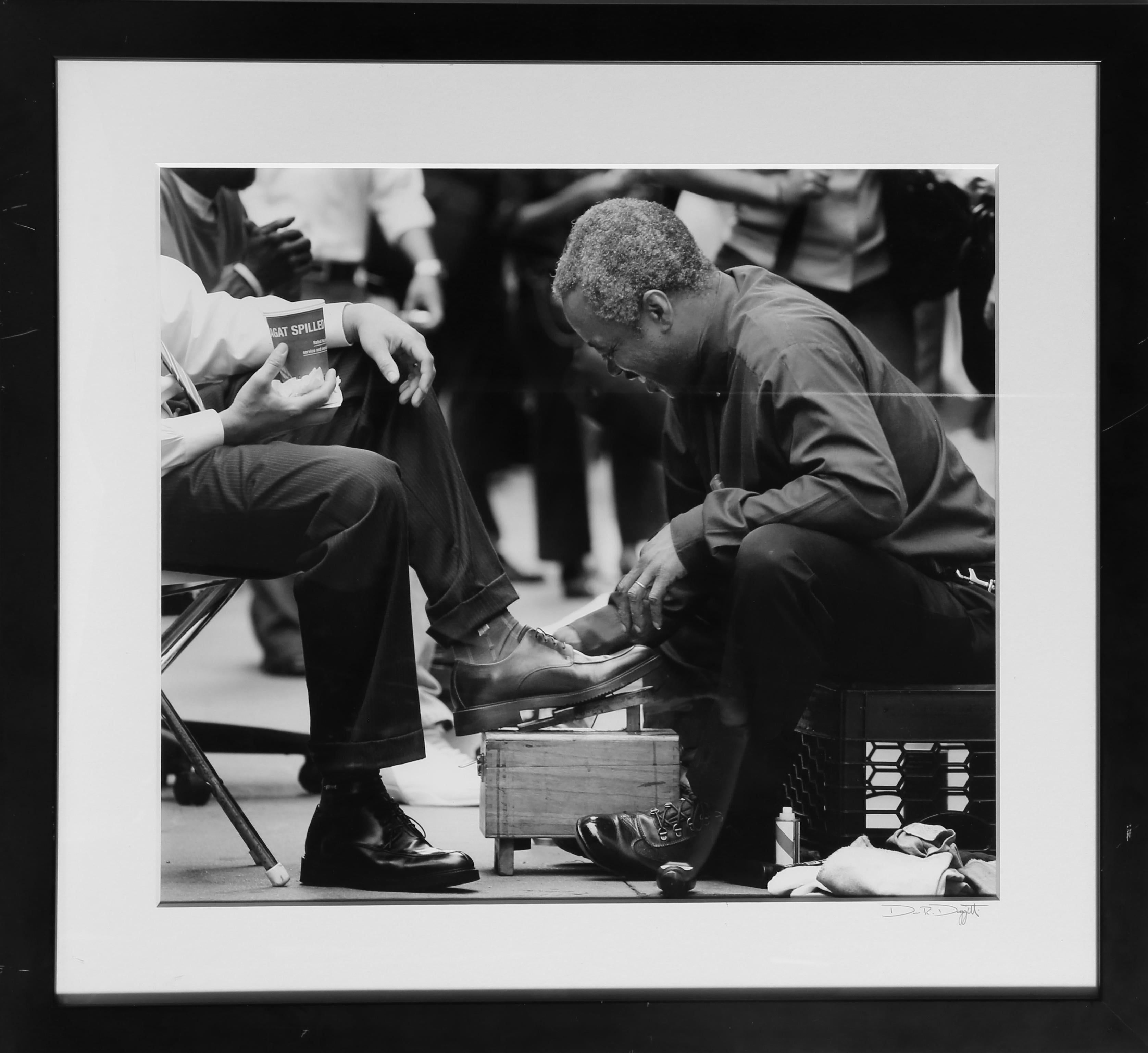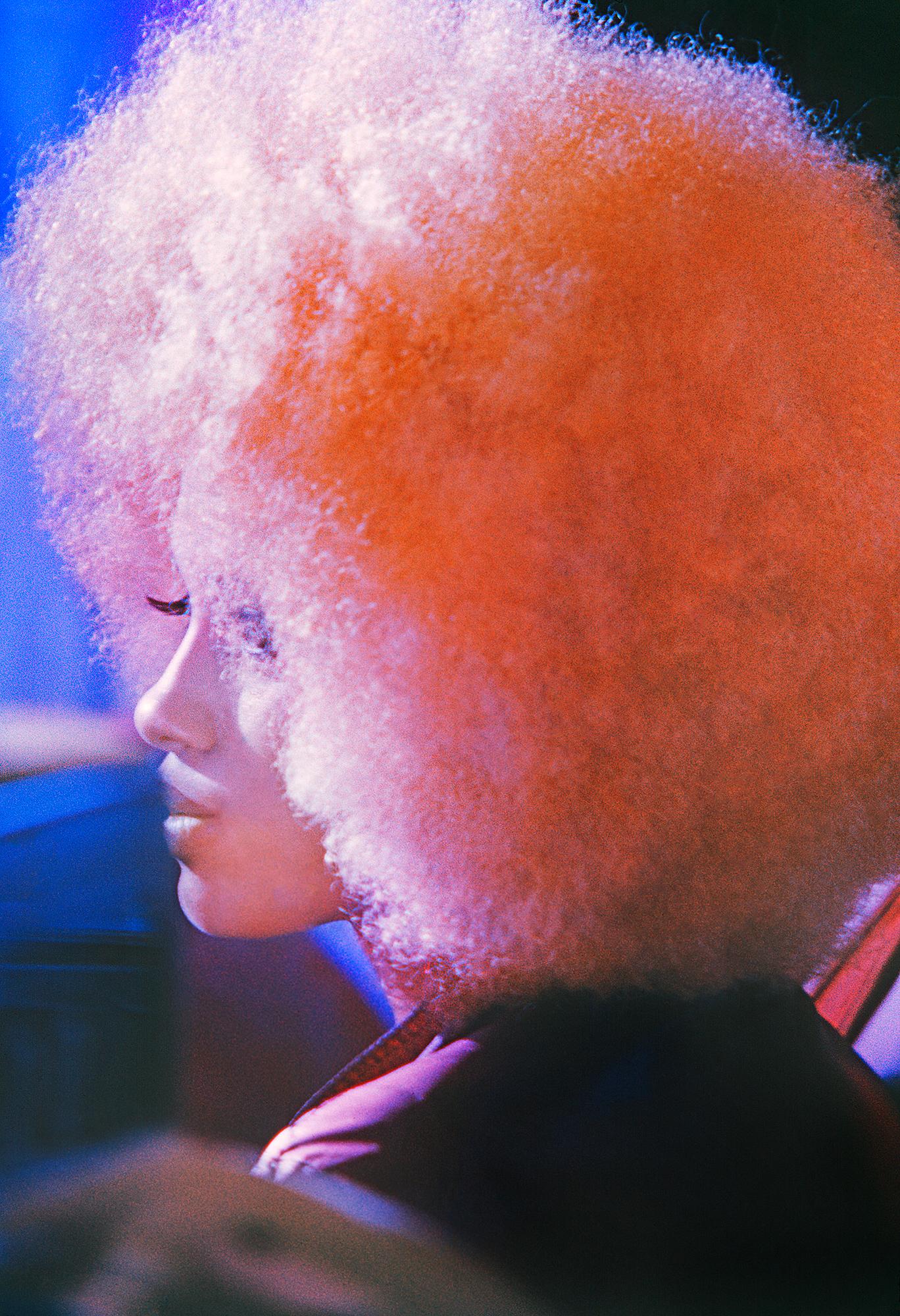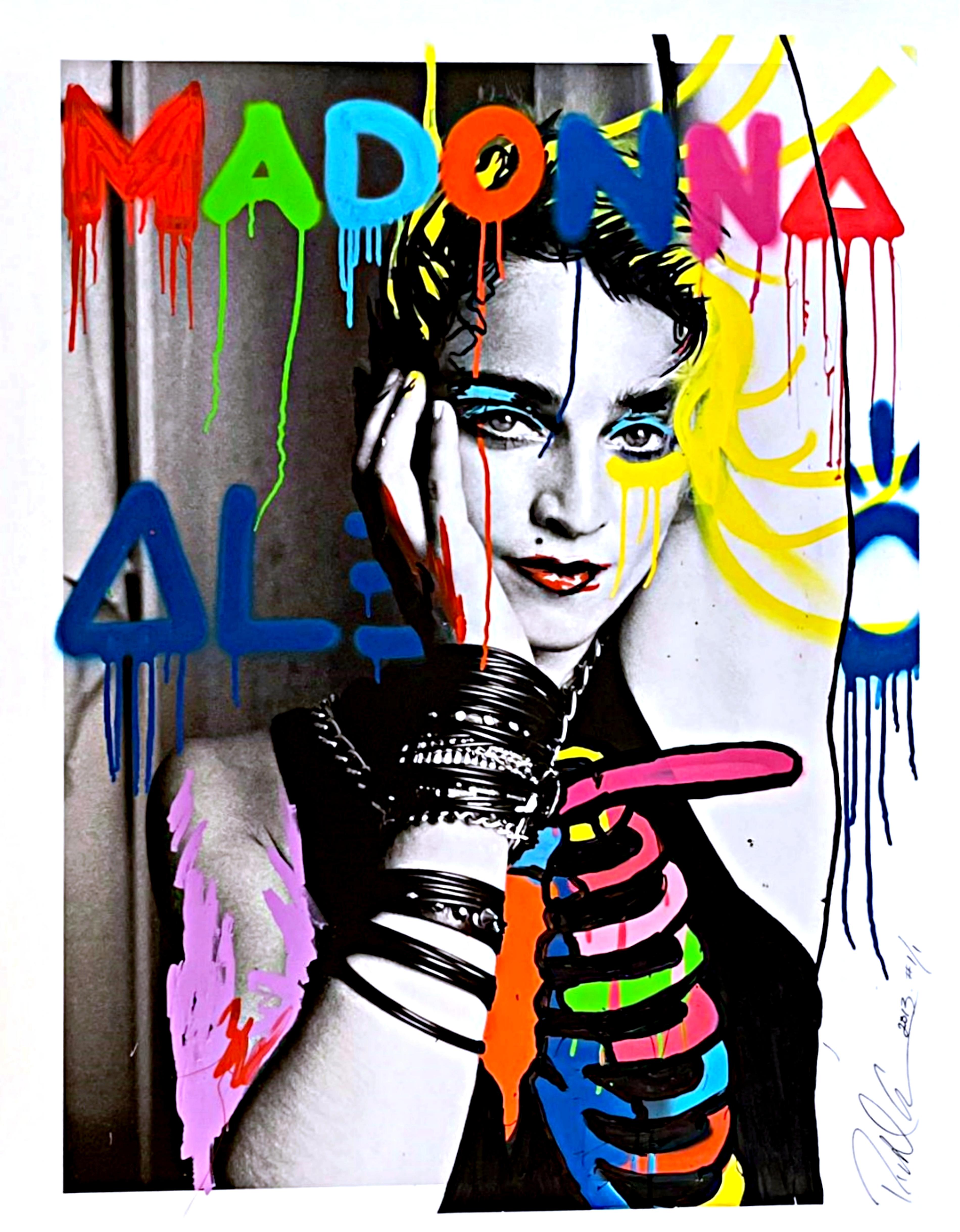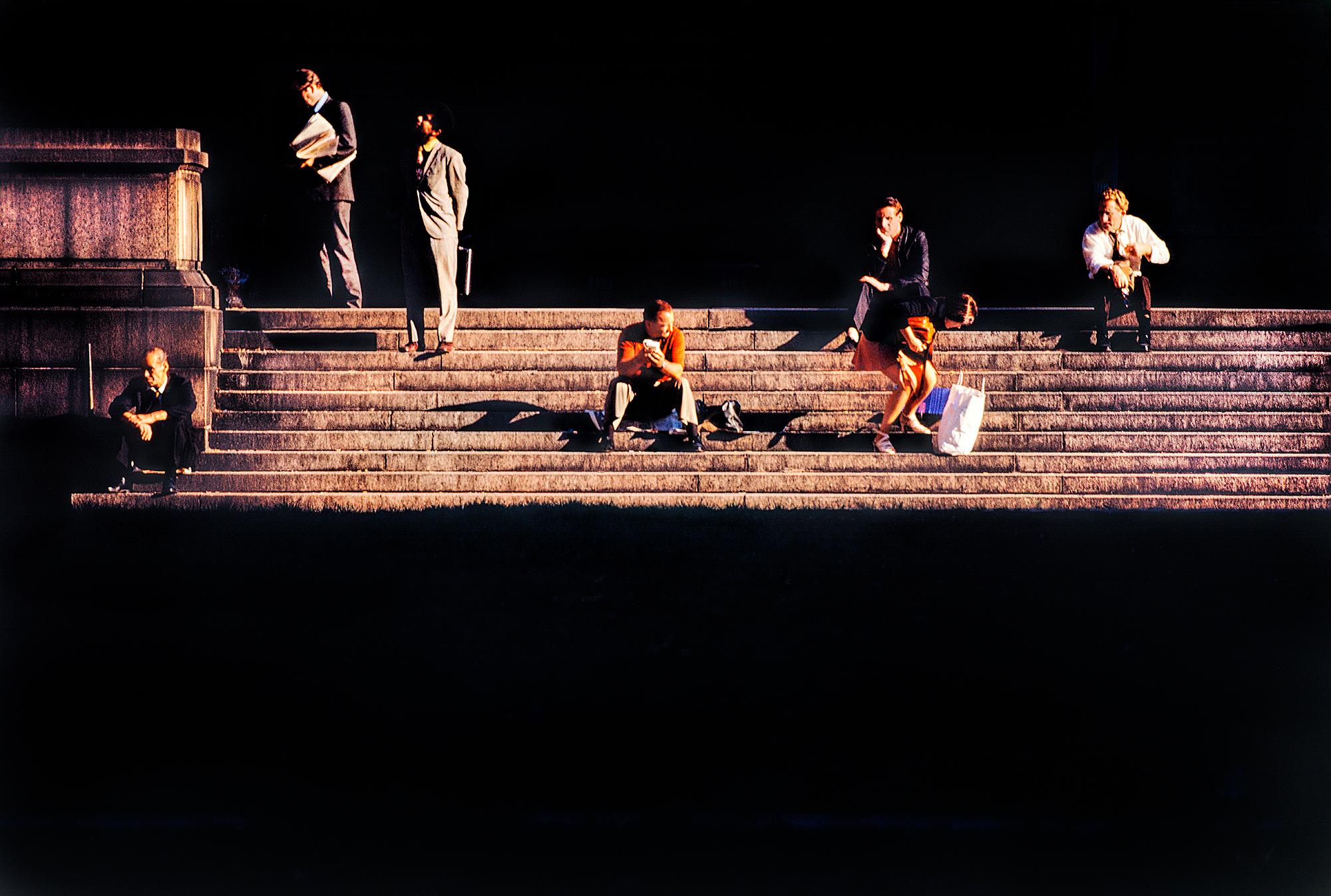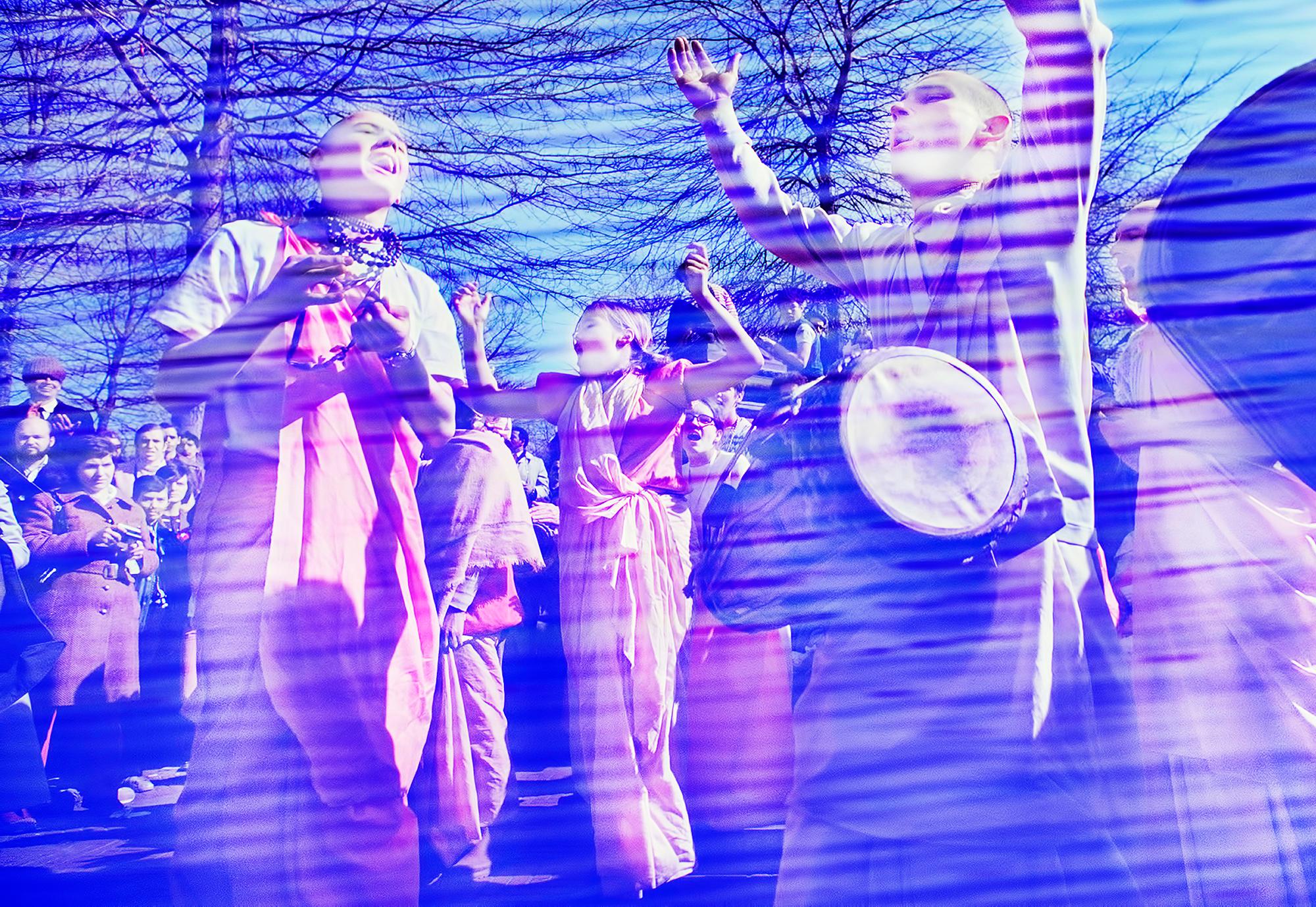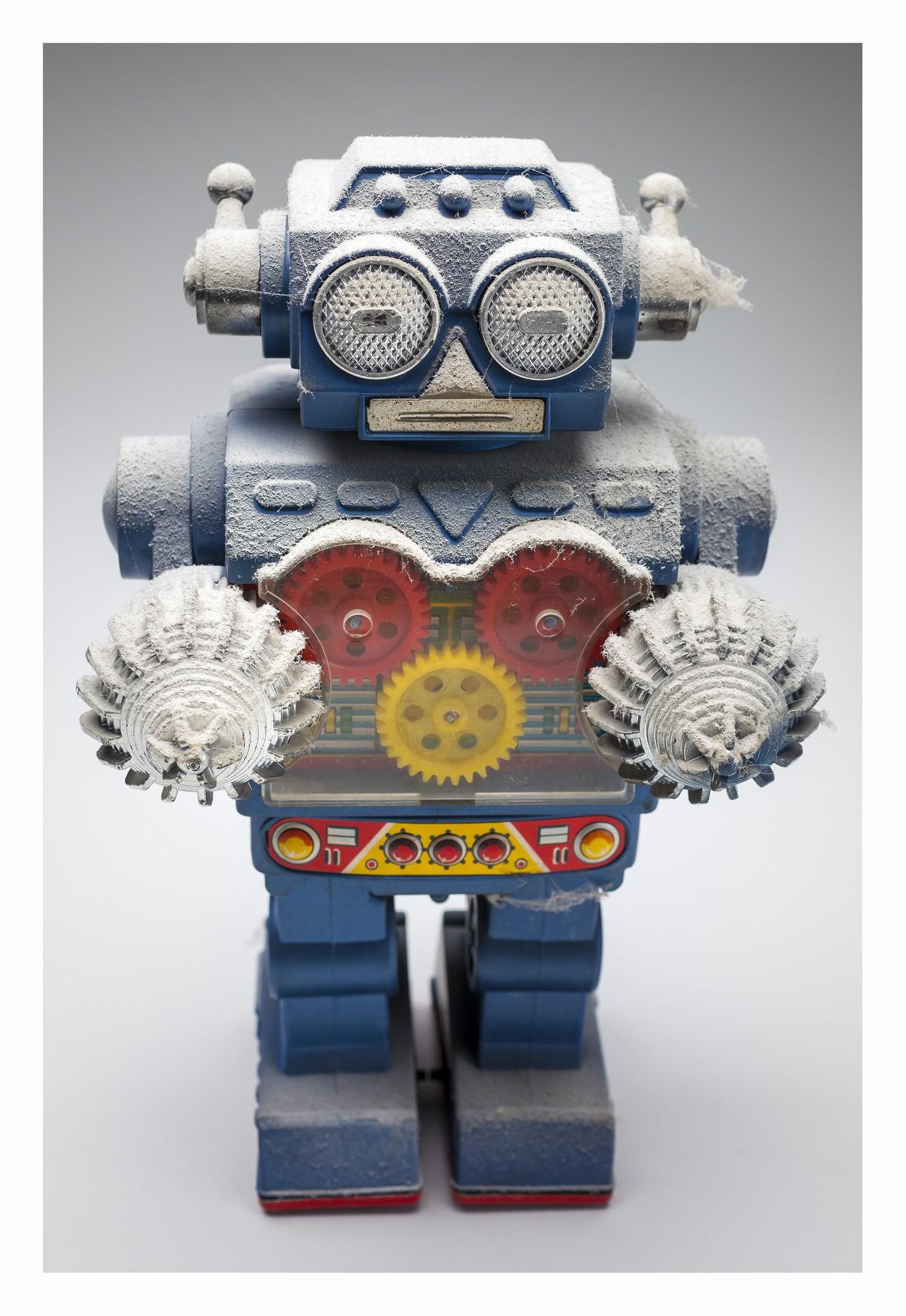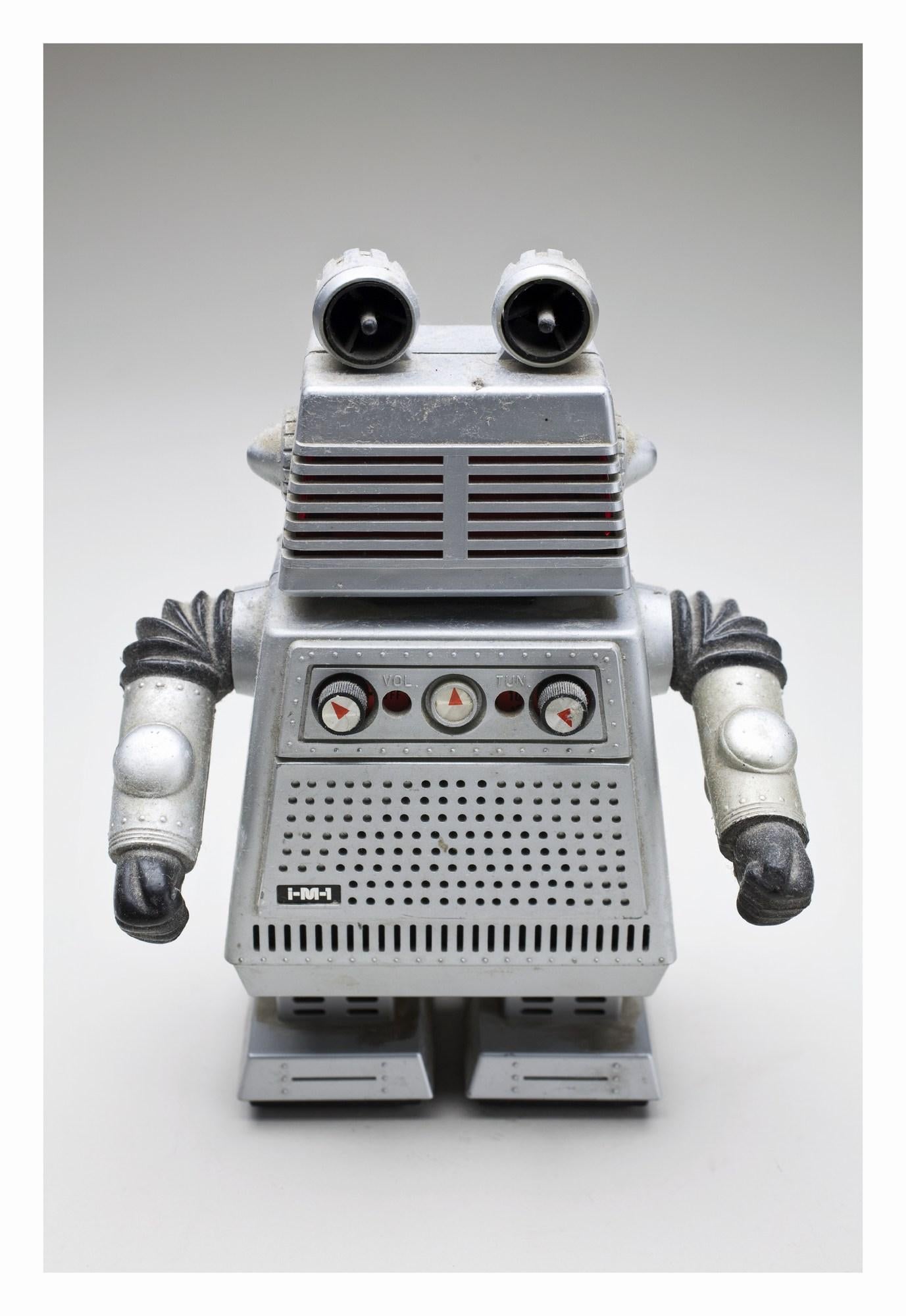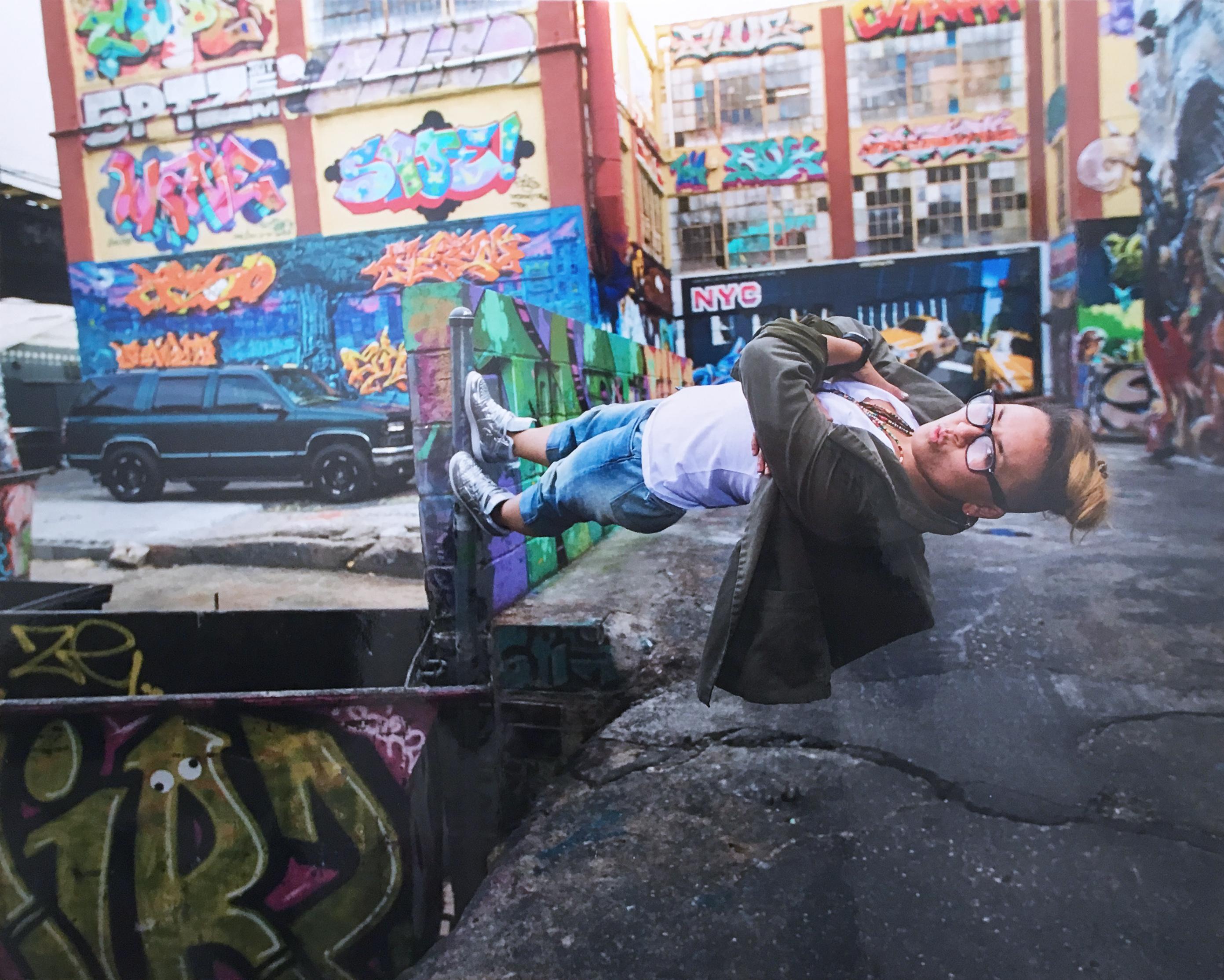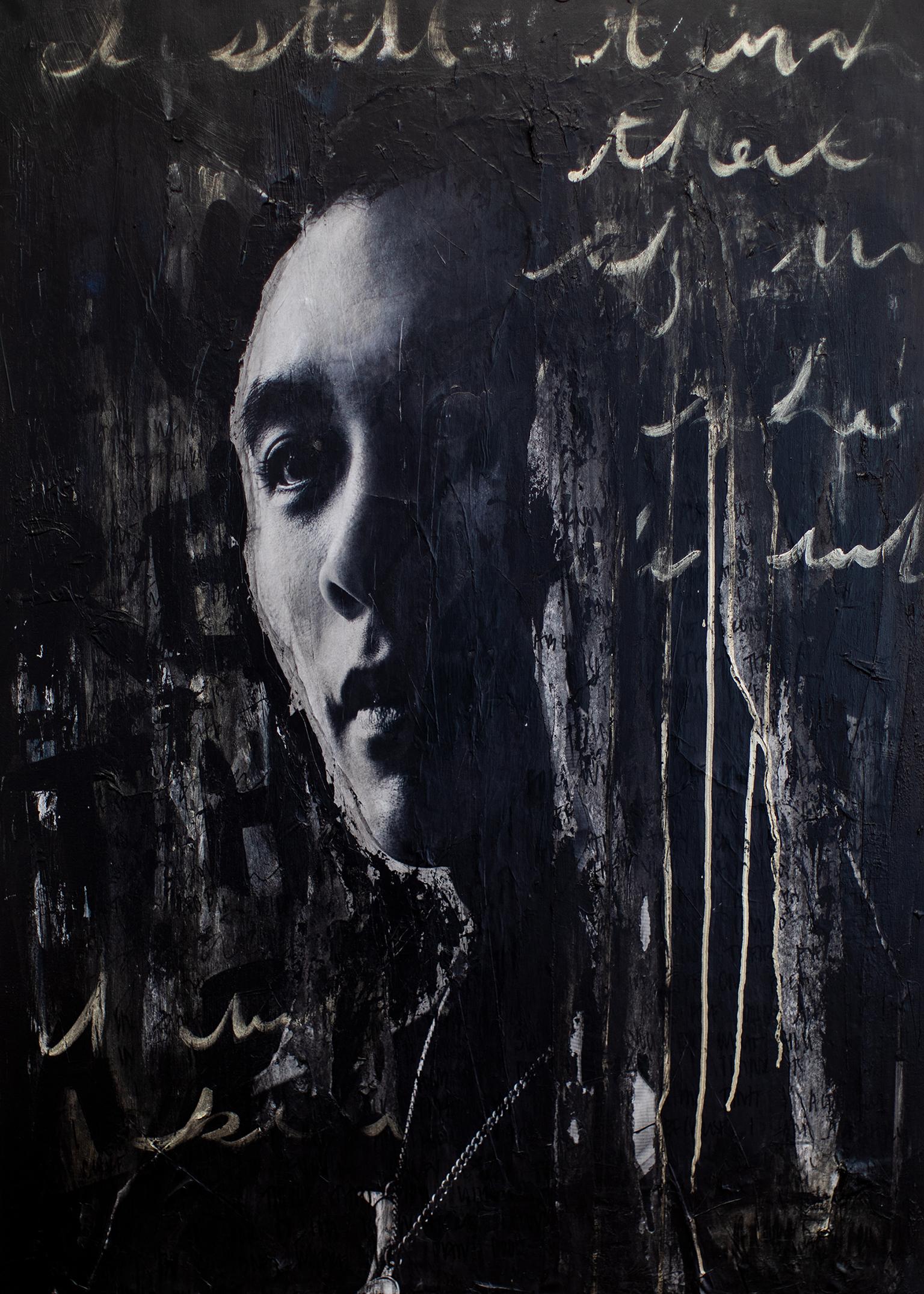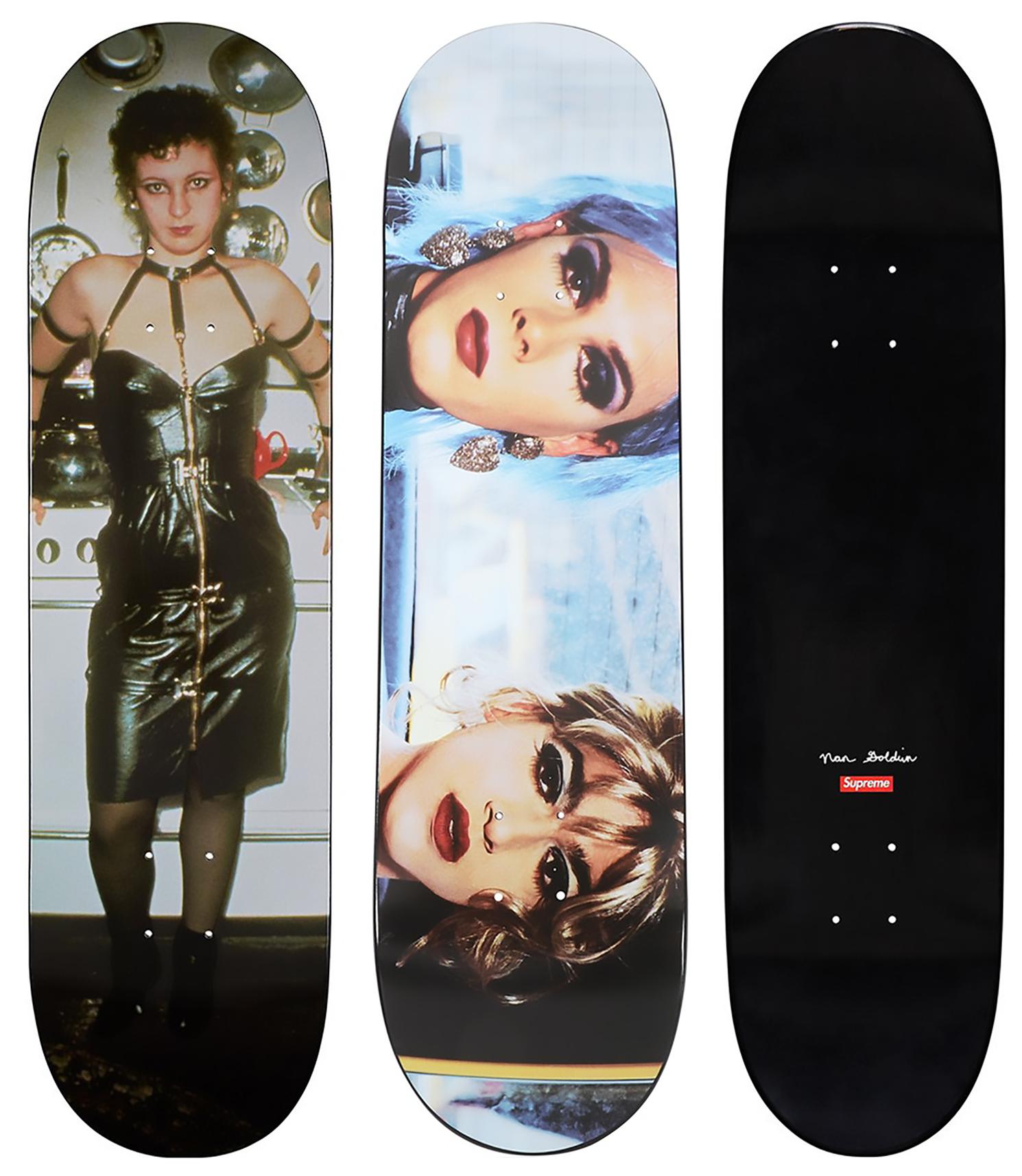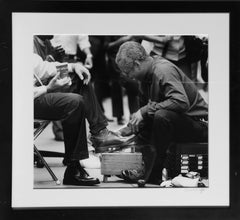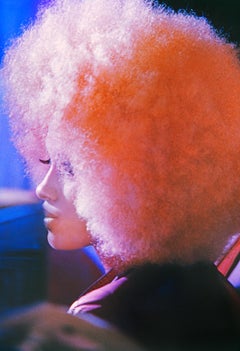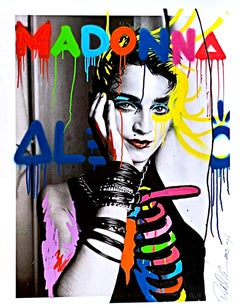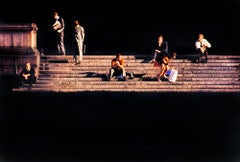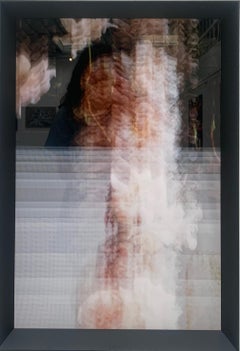
Flower H3 - Portrait photography by Joachim Romain
View Similar Items
Video Loading
1 of 11
Joachim RomainFlower H3 - Portrait photography by Joachim Romain2021
2021
About the Item
- Creator:Joachim Romain (1973, French)
- Creation Year:2021
- Dimensions:Height: 25.01 in (63.5 cm)Width: 17.13 in (43.5 cm)
- More Editions & Sizes:80 x 60 cm Price: $2,868120 x 80 cm Price: $4,016
- Medium:
- Movement & Style:
- Period:
- Condition:
- Gallery Location:PARIS, FR
- Reference Number:1stDibs: LU2489212681812
Joachim Romain focuses his gaze on the layers of information present in posters, elements of a mass consumer society. By exploring natural urban wear and the diversity of typography across different eras and countries, he develops experiences of tearing posters in the streets. In a certain lineage with ar5sts from the New Realism movement, such as Villéglé and Hains, he works with the materials offered by the city. Ini5ally, photography allowed him to document his observa5ons of urban poster walls. He now uses it to reveal our era, in which our eyes are constantly captivated
by images both in cities and on websites, fueling a frenzy of consumption. This attention has led to his series Fast Shop (2009), created from snapshots of online shopping sites. His images unveil bodies, while brand models almost disappear, expressing the excessive speed of a consumer trend. The brilliance of the photographic prints enhances the effect of sublima5on, the allure of the advertising image as one would see it on a screen.
Authenticity Guarantee
In the unlikely event there’s an issue with an item’s authenticity, contact us within 1 year for a full refund. DetailsMoney-Back Guarantee
If your item is not as described, is damaged in transit, or does not arrive, contact us within 7 days for a full refund. Details24-Hour Cancellation
You have a 24-hour grace period in which to reconsider your purchase, with no questions asked.Vetted Professional Sellers
Our world-class sellers must adhere to strict standards for service and quality, maintaining the integrity of our listings.Price-Match Guarantee
If you find that a seller listed the same item for a lower price elsewhere, we’ll match it.Trusted Global Delivery
Our best-in-class carrier network provides specialized shipping options worldwide, including custom delivery.You May Also Like
Shoeshine, Photograph by Drew Doggett
By Drew Doggett
Located in Long Island City, NY
Artist: Drew Doggett
Title: Shoeshine
Medium: Archival Pigment Print, signed on the matting
Size: 20 x 23 inches
Framed Size: 29 x 32 inches
Category
Early 2000s Street Art Portrait Photography
Materials
Archival Pigment
Black Hippie with Blond Afro, Washington Square Park - Henri Ghent Black Curator
By Mitchell Funk
Located in Miami, FL
In 1969, weekends at Bethesda Fountain were a gathering place for the radical, glamorous, and hip people of the time. Abbie Hoffman and Jerry Rubin were regular speakers there. Po...
Category
1960s Street Art Portrait Photography
Materials
Inkjet, Archival Ink, Archival Paper, Archival Pigment
Richard Corman and Alec Monopoly, Madonna, monotype signed 1/1 by Richard Corman
By Richard Corman
Located in New York, NY
Richard Corman and Alec Monopoly
Madonna, 2013
Color photographic monotype on archival pigment paper
Hand signed, dated and numbered 1/1 by Richard Corman on the front
26 × 20 inches...
Category
2010s Street Art Portrait Prints
Materials
Monotype, Archival Pigment
Figures on the Steps of Bryant Park with Caravaggio Light
By Mitchell Funk
Located in Miami, FL
The ephemeral nature of fleeting light is captured in Kodachrome in this early color photograph taken in 1971.
The work is signed, dated, and numbered 3/15 lower right recto, other s...
Category
1970s Street Art Landscape Photography
Materials
Archival Pigment, Archival Ink, Archival Paper
Spiritual Hare Krishna Central Park, Consciousness is the Original Energy
By Mitchell Funk
Located in Miami, FL
In the early 1970s, Central Park was a center for celebrations and protests. In his image, the Hare Krishnas who are a mystical sect of Hinduism are capt...
Category
1970s Street Art Figurative Photography
Materials
Archival Ink, Archival Paper, Archival Pigment
Untitled (from ROBOTNICS Series)
By Christian Rothmann
Located in Kansas City, MO
Christian Rothmann
ROBOTNICS Series
C-Print
2019
Edition S (Edition of 10)
12 x 8.3 inches (30.5 x 21 cm)
Signed, dated and numbered verso
Other Edition Sizes available:
- Edition M (Edition of 6) 35.4 x 23.6 inches (90 x 60 cm)
- Edition L (Edition of 6) 47.2 x 31.5 inches (120 x 80 cm)
- Edition XL (Edition of 3) 88.8 x 58.8 inches (225 x 150 cm)
PUR - Price Upon Request
--------------
Since 1979 Christian Rothmann had more than 40 solo and 80 group exhibitions worldwide.
Christian Rothmann had guest lectures, residencies, art fairs and biennials in Europe, Japan, USA, Australia and Korea.
Christian Rothmann (born 1954 in Kędzierzyn, Poland ) is a painter, photographer, and graphic artist.
In 1976 he first studied at the “Hochschule für Gestaltung” in Offenbach, Germany and moved to Berlin in 1977, where he graduated in 1983 at the “Hochschule der Künste”. From 1983 to 1995 he taught at the university as a lecturer and as an artist with a focus on screenprinting and American art history. To date, a versatile body of work has been created, which includes not only paintings but also long-standing photo projects, videos, and public art.
Guest lectures, teaching assignments, scholarships and exhibitions regularly lead Rothmann to travel home and abroad.
------------------------
Rothmann's Robots
These creatures date back to another era, and they connect the past and the future. They were found by Christian Rothmann, a Berlin artist, collector and traveler through time and the world: In shops in Germany and Japan, Israel and America, his keen eye picks out objects cast aside by previous generations, but which lend themselves to his own work. In a similar way, he came across a stash of historic toy robots of varied provenance collected by a Berlin gallery owner many years ago. Most of them were screwed and riveted together in the 1960s and 70s by Metal House, a Japanese company that still exists today. In systematically photographing these humanoids made of tin - and later plastic - Rothmann is paraphrasing the idea of appropriation art. Unknown names designed and made the toys, which some five decades on, Rothmann depicts and emblematizes in his extensive photo sequence.
In their photographs of Selim Varol's vast toy collection, his German colleagues Daniel and Geo Fuchs captured both the stereotypical and individual in plastic figures that imitate superheroes which were and still are generally manufactured somewhere in Asia. Christian Rothmann looks his robots deep in their artificially stylized, painted or corrugated eyes - or more aptly, their eye slits - and although each has a certain degree of individuality, the little figures remain unknown to us; they project nothing and are not alter egos. Rothmann trains his lens on their faces and expressions, and thus, his portraits are born. Up extremely close, dust, dents, and rust become visible. In other words, what we see is time-traces of time that has passed since the figures were made, or during their period in a Berlin attic, and - considering that he robots date back to Rothmann's childhood - time lived by the photographer and recipients of his pictures. But unlike dolls, these mechanical robots bear no reference to the ideal of beauty at the time of their manufacture, and their features are in no way modeled on a concrete child's face.
In this art project the robots appear as figures without a context, photographed face-on, cropped in front of a neutral background and reduced to their qualities of form. But beyond the reproduction and documentation a game with surfaces is going on; our view lingers on the outer skin of the object, or on the layer over it. The inside - which can be found beneath - is to an extent metaphysical, occurring inside the observer's mind. Only rarely is there anything to see behind the robot's helmet. When an occasional human face does peer out, it turns the figure into a robot-like protective casing for an astronaut of the future.
If we really stop and think about modern toys, let's say those produced from the mid 20th century, when Disney and Marvel films were already stimulating a massive appetite for merchandising, the question must be: do such fantasy and hybrid creatures belong, does something like artificial intelligence already belong to the broader community of humans and animals? It is already a decade or two since the wave of Tamagotchis washed in from Japan, moved children to feed and entertain their newly born electronic chicks in the way they would a real pet, or to run the risk of seeing them die. It was a new form of artificial life, but the relationship between people and machines becomes problematic when the machines or humanoid robots have excellent fine motor skills and artificial intelligence and sensitivity on a par with, or even greater than that of humans. Luckily we have not reached that point yet, even if Hollywood adaptations would have us believe we are not far away.
Rothmann's robots are initially sweet toys, and each toy is known to have a different effect on children and adults. They are conceived by (adult) designers as a means of translating or retelling history or reality through miniature animals, knights, and soldiers. In the case of monsters, mythical creatures, and robots, it is more about creating visions of the future and parallel worlds. Certainly, since the success of fantasy books and films such as Lord of the Rings or The Hobbit, we see the potential for vast enthusiasm for such parallel worlds. Successful computer and online games such as World
of Warcraft, or the creation of avatars are also interesting worldwide phenomena of virtual realities that are not only relevant for children and teens.
So when a middle-aged Berlin photographic artist (like Christian Rothmann) chooses to study 120 toy robots with great difference in form, it represents a journey back to his own childhood - even if at the time, he played with a steam engine rather than a robot. Once batteries had been inserted, some of the largely male or gender-neutral robots, could flash, shoot, turn around and even do more complicated things. Some can even still do it today - albeit clumsily. This, of course, can only be seen on film, but the artist intends to document that as well; to feature the robots in filmic works of art.
The positioning of the figures in the studio is the same as the tableau of pictures in the exhibition room. In this way, one could say Rothmann deploys one robot after the other. This systematic approach enables a comparative view; the extreme enlargement of what are actually small and manageable figures is like the macro vision of insects whose fascinating, sometimes monster-like appearance only becomes visible when they are blown up a hundredfold. The same thing goes for the robots; in miniature form, they seem harmless and cute, but if they were larger than humans and made noises to match, they would seem more threatening.
Some of the tin figures...
Category
2010s Street Art Photography
Materials
C Print
